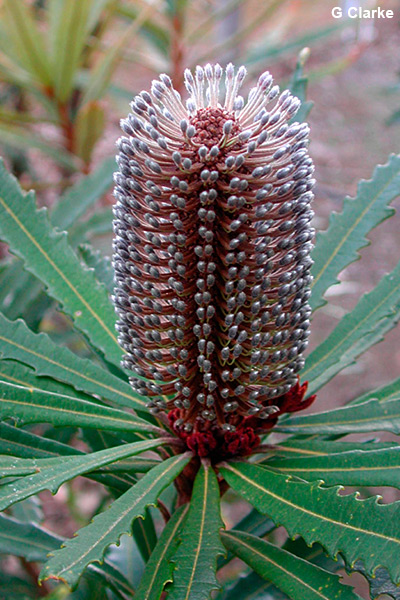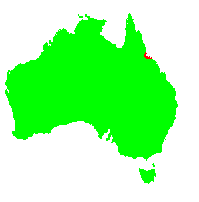General Description:
Banksia plagiocarpa is a medium shrub to about 5 metres in height. It was originally collected in the 1860s but remained unnamed and was not collected again until rediscovered in the early 1980s. The leaves are about 100-200 mm long by up to 15 mm wide and are narrowly elliptical in shape with recurved margins which may be entire or serrated. The new growth is tomentose (covered with short hairs) and is usually an attractive rusty colour. The flowers occur in narrow spikes which are typically about 100-150 mm long, 60 mm wide and bluish grey in bud, opening to a pale yellow. The seeds are enclosed in follicles attached to a woody cone and are generally retained within the cone until burnt.
Although this species has not been in cultivation for very long it is proving to be an adaptable species for tropical to temperate climates. It is best in full sun or dappled shade in well drained soils. Given its natural habitat, it may not tolerate severe frosts.
Propagation from seed is reliable without pre-treatment and cuttings also succeed but may be slow to strike and success rate may be well below 100%.
* EPBC Act = Environment Protection and Biodiversity Conservation Act 1999;
ROTAP = Rare or Threatened Australian Plants (Briggs and Leigh, 1988)
For further information refer the Australian Plants at Risk page

Banksia plagiocarpa
Photo: Gwyn Clarke
 Australian Native Plants Society (Australia)
Australian Native Plants Society (Australia)













